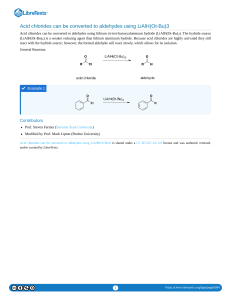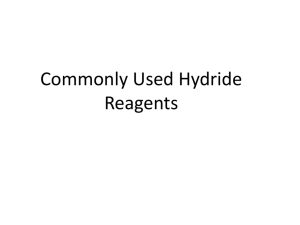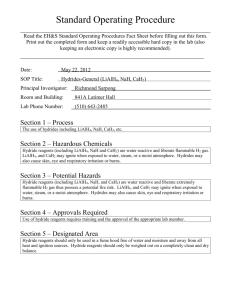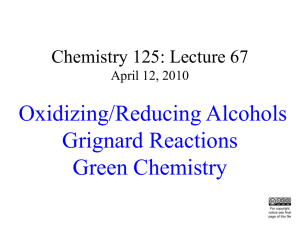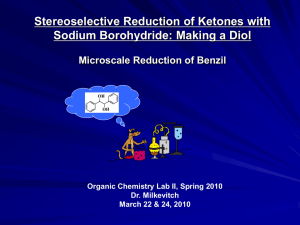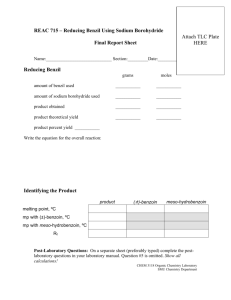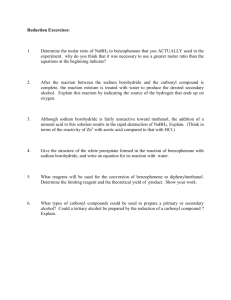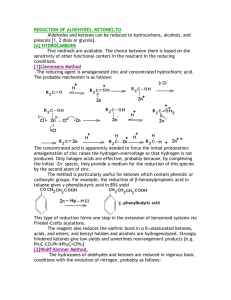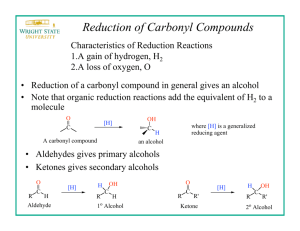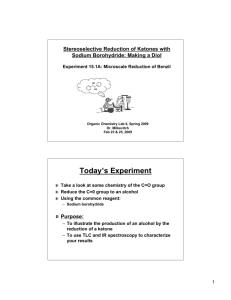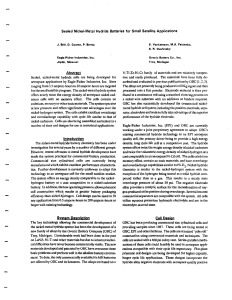Selectivity using sodium borohydride
advertisement
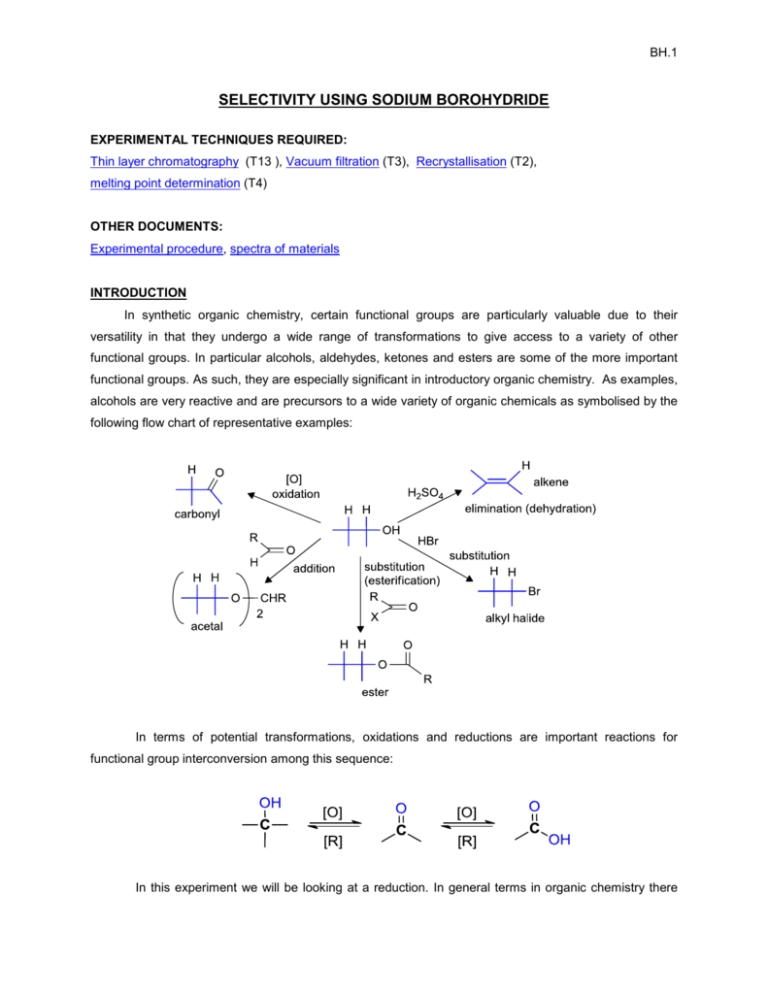
BH.1 SELECTIVITY USING SODIUM BOROHYDRIDE EXPERIMENTAL TECHNIQUES REQUIRED: Thin layer chromatography (T13 ), Vacuum filtration (T3), Recrystallisation (T2), melting point determination (T4) OTHER DOCUMENTS: Experimental procedure, spectra of materials INTRODUCTION In synthetic organic chemistry, certain functional groups are particularly valuable due to their versatility in that they undergo a wide range of transformations to give access to a variety of other functional groups. In particular alcohols, aldehydes, ketones and esters are some of the more important functional groups. As such, they are especially significant in introductory organic chemistry. As examples, alcohols are very reactive and are precursors to a wide variety of organic chemicals as symbolised by the following flow chart of representative examples: In terms of potential transformations, oxidations and reductions are important reactions for functional group interconversion among this sequence: In this experiment we will be looking at a reduction. In general terms in organic chemistry there BH.2 are three reductive processes to consider. They are summarised below with examples: (1) addition of molecular hydrogen, H2, in the presence of a catalyst (i.e. catalytic hydrogenation) (2) addition of hydride, H-, followed by addition of a proton, H+, (i.e. hydride reduction), and (3) addition of an electron then a proton, an electron and then a proton (i.e. dissolving metal reduction) In this experiment you will investigate the second example and look at the selectivity of a hydride reduction. The two most common hydride reagents in organic chemistry are lithium aluminum hydride (LiAlH4) and sodium borohydride (NaBH4). Hydride reagents are a source of hydride, H-, which is nucleophilic hydrogen. This makes it the “opposite” to H+ which is electrophilic hydrogen. Hydride reagents are most commonly used for reducing polar covalent bonds, of which the carbonyl group is a very good example (see above). The chemistry of hydride reagents is in many ways mechanistically similar to the chemistry of Grignard reagents (see the preparation of benzoic acid). In biological systems, the reducing agent, nicotinamide adenine dinucleotide, a.k.a. NADH, can function as a biological hydride reducing agent. Lithium aluminum hydride is very reactive and must be used with caution under anhydrous conditions, typically in diethyl ether or tetrahydrofuran (THF) solvents, and is capable of reducing a wide range of functional groups including aldehydes, ketones, esters, carboxylic acids, amides, nitriles and epoxides. In contrast, sodium borohydride is less reactive and can be used in water or alcohol solvents and is more selective in its reactivity and reduces fewer functional groups. However, both reagents are similar in that all four of the hydrogen atoms present can at least in principle, function as nucleophiles. The selectivity of sodium borohydride towards carbonyl containing compounds such as aldehydes, ketones and esters is investigated in this experiment. Note that the reduction of a carboxylic acid is shown in the diagram below, but the reduction of esters is very similar where the carbonyl group in the acid portion is reduced to a primary alcohol via an intermediate aldehyde. More advanced reagents based on lithium aluminum hydride and sodium borohydride are available that offer more advanced selectivity (but these are beyond the current scope of Chem 353). BH.3 The experiment will also serve to illustrate some important concepts of practical organic chemistry: reaction. monitoring a reaction using thin layer chromatography to determine the progress of the Thin layer chromatography was encountered in the Chem 351 experiment, the analysis of analgesics. You will also be working on small scale, an important skill and practicing your recrystalisation technique by isolating the product and measuring the melting point of the reduction of the ketone, benzophenone. REFERENCES 1. M. Jones and S.A. Fleming, in "Organic Chemistry", Norton, 4th ed., 2010, Chapter 16, p. 801-3, th 817, Chapter 18, p. 900; 5 ed. 2014, Chapter 16, p.806-7, 822.
